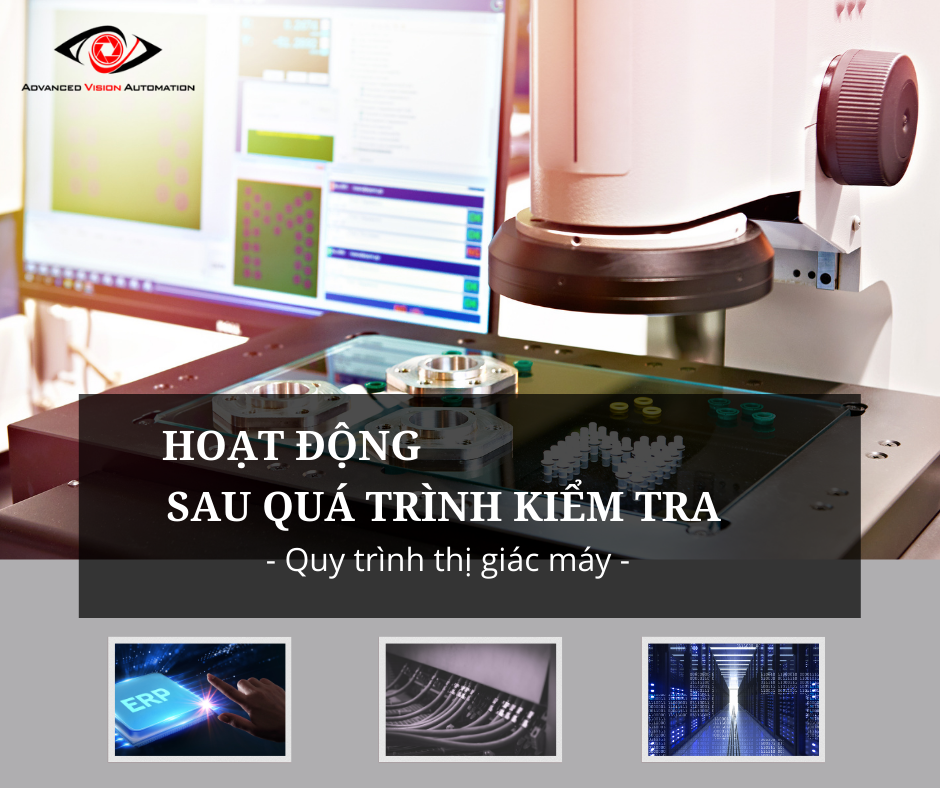Post-Inspection Activities - Machine Vision Process
For the manufacturing industry, quality inspection is an indispensable step. Quality products not only create a brand for a manufacturing company but also create a certain safety standard for related products such as gears, PCB components.
Manufacturing is a demanding job, especially workers working in the inspection stage have to do these jobs very quickly. The need to maintain speed and accuracy in this process is a huge challenge. However, recently, with the development of automation, such inspection processes have been implemented. Various AI models such as machine vision have taken over the job of product quality inspection.

What is the role of inspection in maintaining product quality?
Inspection determines the quality level of the product to ensure that the manufacturing process is working as expected. The process helps to detect defects in the product which helps the management to decide whether to allow or reject the release of those products. Inspection methods ensure that there is standardization, uniformity and quality of workmanship in the products produced. They control quality, reduce waste, reduce production costs and find the causes of defective products. Inspection is carried out before, during and after the production process so that at every stage, the same level of quality control can be maintained according to specifications and standards. For inspection to be effective, workers must be provided with adequate resources. They must also be properly trained in their jobs and have access to all the necessary authority to do their jobs properly. The most important aspect of this job is a thorough knowledge of the standards and specifications relevant to the product being tested. The time required for such a thorough test must also be taken into account or automation is required where time constraints exist.
What to Look for After Inspection?
- ERP
ERP (Enterprise Resource Planning) integrates all aspects of operations like sales, monitoring, inspection, etc. by maintaining a single database for all such purposes. A complete ERP approach allows all the data to be available in a centralized location and accessible to all operators. Having an ERP can play a vital role in the post-inspection process. Once certain defects are detected in a product or certain products are rejected due to non-conformance to standards, an ERP system will provide all those defects in one place where the company can analyze and identify defect patterns and possible causes. ERP also reduces costs as all the processes are streamlined and business information is updated in real-time. It increases accuracy, reduces error rates and reduces labor costs.
- PLC
PLC (Programmable Logic Controller) is widely used in manufacturing industries. It is rugged, easy to handle and simple to use. It can monitor all automation processes, including inspection. PLC can collect and monitor data from the machines that they take input from. It can also display useful information based on that data. This information can be displayed by PLC for better inference. In post-inspection conditions, PLC can visually display what the defects are and what their causes are based on the data provided by the inspection system.
- Database
The database stores all the data from the inspection process, including defective products and rejected products. The data in the database can be used to form important metrics against which the inspection process will be performed. It can also identify weak spots or points where permanent defects are seen. It can help you make quick and informed decisions.
What are the different communication signals that can be provided?
Automation of physical systems has paved the way for Industry 4.0. Machines can communicate with each other and take action based on that communication. Signals and data can be communicated over the Internet. This also allows remote control of machines and taking action based on the data received. In case of an error during inspection, a sensor can be used to detect it and send a signal to the operator. The inspection data related to defects, errors and faults can then be stored in one place for further analysis and discussion.
How do we decide on proper post-process communication?
Post-process communication between operators, inspectors and managers must be streamlined so that decisions can be made quickly and production does not stop due to conflicts. To establish the principles of good post-process communication, here are some points to keep in mind.
- Have a shared vision
The immediate steps to take after the audit should be geared toward the larger goal of continued supply chain success. If the goals are shared, collaboration will come automatically.
- Create a backup plan
Even in perfectly envisioned situations, things can go wrong. When an emergency arises, have a backup plan in place where each person is assigned a specific task to consider.
- Always follow best practices
Whenever any post-inspection task is performed, following best practices will not only save time but also ensure that the next steps are performed correctly.
Thus, post-inspection processes are as important as the inspection itself and the data obtained from the inspection can be put to best use when there is a good post-inspection process. Post-inspection processing allows reflection on the inspection process, why defects and errors occurred and thinking about how to fix them. Comprehensive guidance on how to approach the post-inspection task can help the worker perform the task seamlessly. Using ERP and taking advantage of all the information provided by the PLC and database will help in making efficient use of post-inspection time.
